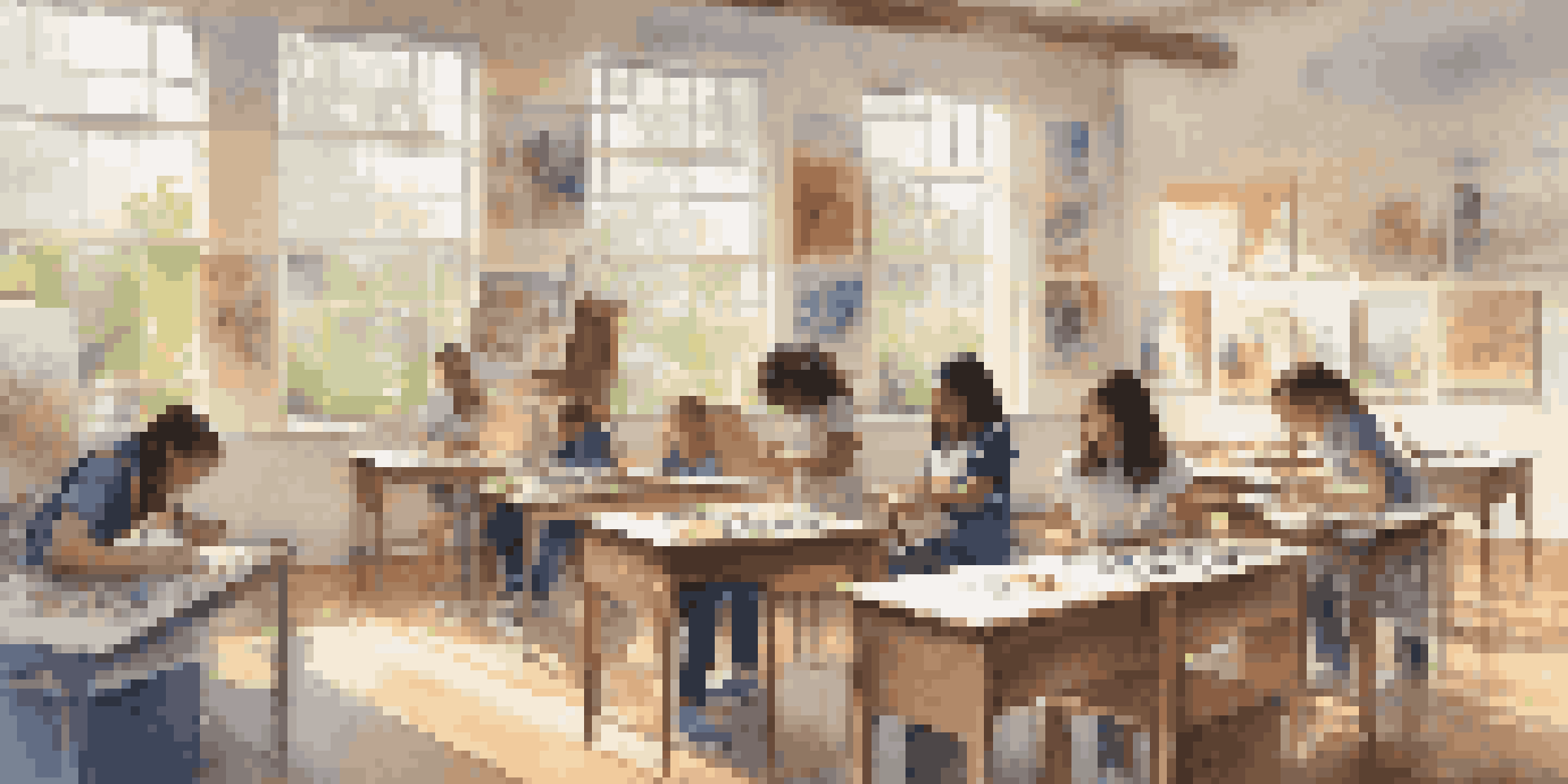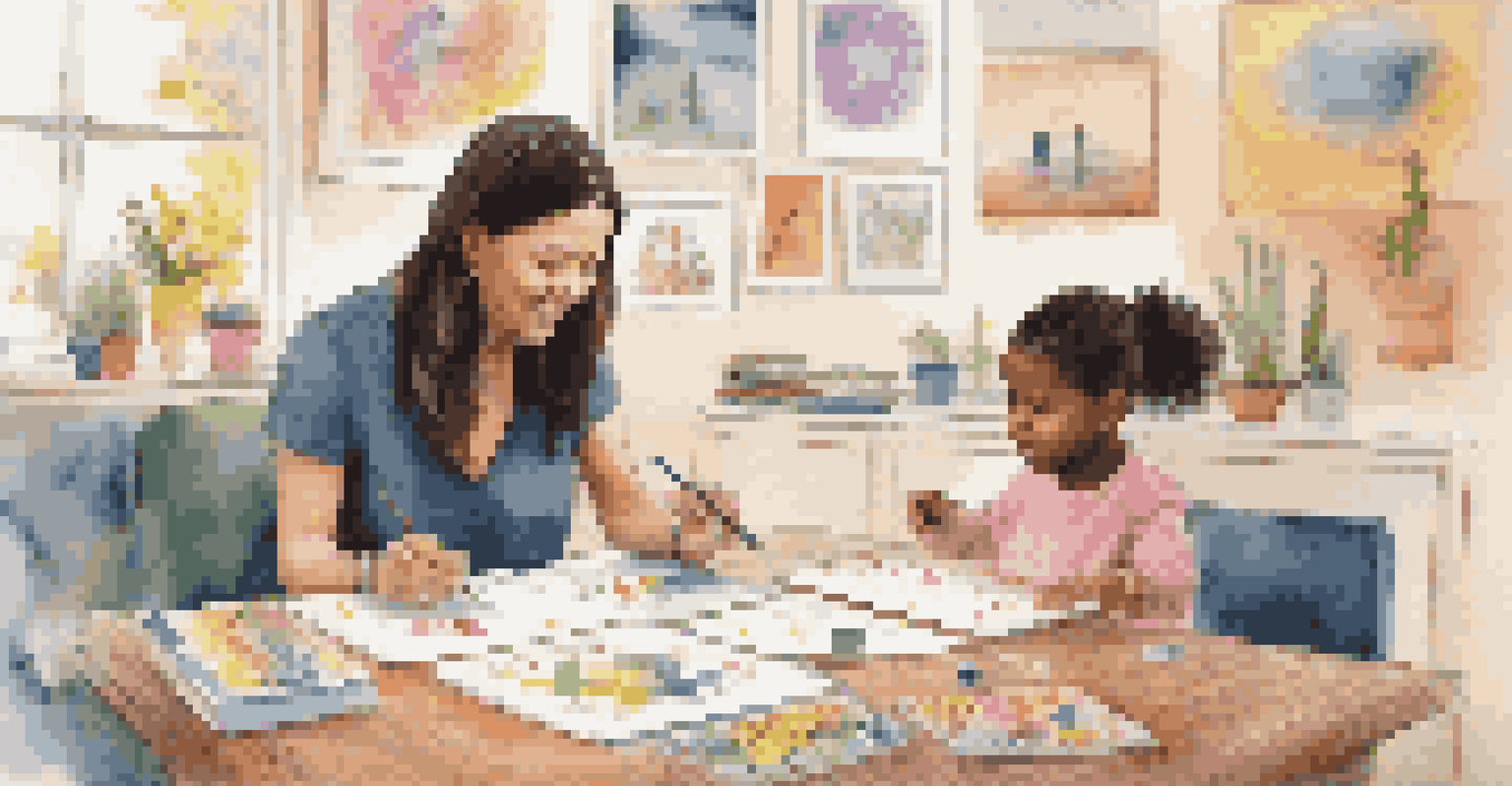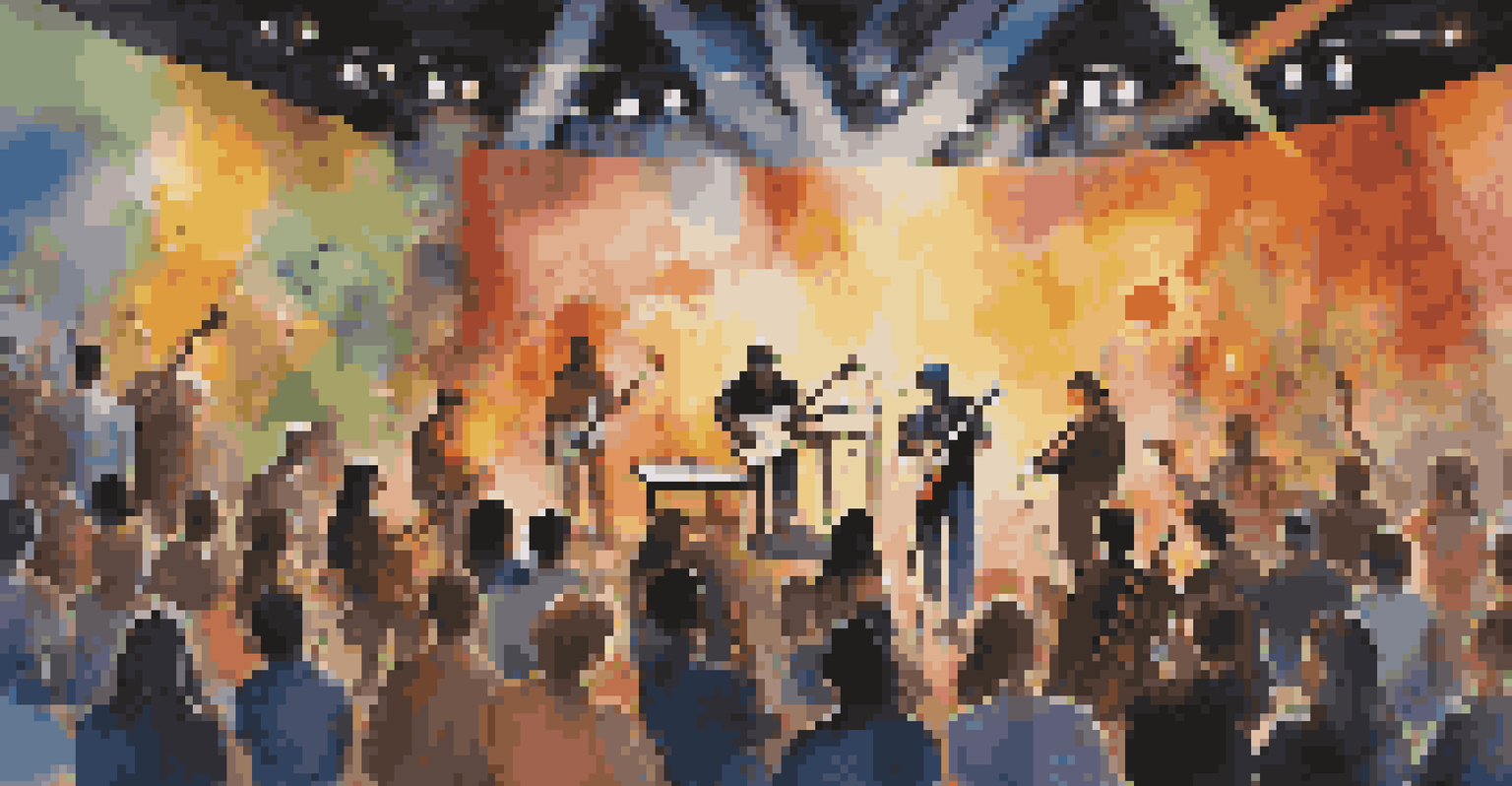The Role of Visual Art in Music Education and Therapy

Understanding the Intersection of Art and Music
Visual art and music are often seen as separate disciplines, but they share a profound relationship. Both forms of expression tap into our emotions, serving as a medium for storytelling and communication. Just like a painting can evoke feelings, a piece of music can transport us to different places in our minds. This intersection is where the magic happens, creating a holistic approach to education and therapy.
Music can change the world because it can change people.
In music education, incorporating visual art can help students connect with music on a deeper level. For instance, creating visual representations of musical concepts can make learning more engaging and memorable. Imagine a student drawing their interpretation of a song; this not only enhances their understanding but also fosters creativity. This blend encourages students to express themselves across different forms of art.
Similarly, in therapeutic settings, the integration of visual art can enhance the healing process. Art therapy often works alongside music therapy to provide a comprehensive approach to emotional and psychological healing. When individuals engage in both visual and auditory arts, they can express feelings that might be difficult to articulate with words alone.
Enhancing Creativity Through Visual Art in Music
Creativity is at the core of both visual arts and music, making their collaboration essential in education. When students explore visual art techniques, they often find new ways to express their musical ideas. This can lead to innovative compositions that blend different styles and genres. By encouraging students to think outside the box, we can nurture a generation of artists who are unafraid to experiment.

Take, for example, a project where students create album covers for their compositions. This task not only allows them to delve into graphic design but also requires them to reflect on the themes and emotions of their music. The visual art becomes a springboard for discussions about the meaning behind their sound, promoting deeper engagement with both disciplines.
Art Enhances Music Education
Integrating visual art into music education fosters creativity, critical thinking, and deeper emotional connections among students.
Moreover, this creative interplay can lead to exciting performances. Imagine a concert where musicians perform alongside visual artists creating live paintings inspired by the music. Such events not only captivate audiences but also highlight the importance of collaboration in the arts, encouraging students to embrace interdisciplinary approaches.
The Benefits of Visual Art in Music Education
Integrating visual art into music education offers numerous benefits that extend beyond mere skill development. One major advantage is improved cognitive abilities; studies show that engaging in multiple forms of art can enhance critical thinking and problem-solving skills. This is particularly beneficial for students who may struggle with traditional learning methods, as art provides alternative pathways for understanding.
Every artist dips his brush in his own soul, and paints his own nature into his pictures.
Additionally, visual art can help students develop a stronger sense of identity and self-expression. When they create visual art alongside music, they learn to communicate their thoughts and feelings more effectively. This empowerment can lead to increased confidence, making students more willing to participate in class and share their ideas with peers.
Lastly, incorporating visual art fosters a collaborative classroom environment. When students work together on projects that blend music and visual art, they learn valuable teamwork skills. This collaboration not only enhances their social skills but also teaches them to appreciate different perspectives, which is vital in both artistic and everyday settings.
Visual Art as a Tool for Music Therapy
In music therapy, visual art serves as a powerful tool for expression and connection. For individuals who may find verbal communication challenging, creating art can provide an alternative way to share their emotions. This is especially beneficial in therapeutic settings for children and adults with special needs, where traditional communication may not be effective.
For example, a music therapist might encourage a client to draw their feelings while listening to a piece of music. This activity can lead to insights about the client's emotional state and facilitate discussions about their experiences. The combination of visual and auditory stimuli creates a rich therapeutic environment, promoting healing and self-discovery.
Visual Art in Music Therapy
Visual art serves as a powerful tool in music therapy, allowing individuals to express emotions and promote healing in a non-verbal way.
Moreover, the act of creating art while engaging with music can be incredibly calming and grounding. Many individuals find that combining these two forms of art helps reduce anxiety and stress. This calming effect makes visual art an invaluable component of music therapy sessions, enhancing the overall therapeutic experience.
Fostering Emotional Connection Through Art and Music
Both visual art and music have the unique ability to evoke emotions and foster connections among individuals. In educational settings, creating art inspired by music can lead to meaningful discussions about feelings and experiences. This process not only deepens students' understanding of the emotional aspects of music but also allows them to relate to their peers on a more personal level.
In therapy, the emotional connection fostered by combining these two art forms can be transformative. Clients are often more willing to share their thoughts and feelings when they can express them through art. This shared experience can build a strong therapeutic alliance, making it easier for therapists to guide clients through their healing journey.
Furthermore, the power of visual art to convey complex emotions can help clients process their experiences. For instance, a person going through grief might find comfort in creating visual representations of their memories linked to music. This process not only aids in emotional processing but also creates a tangible piece that can serve as a reminder of their journey.
Real-World Examples of Art in Music Education and Therapy
Numerous programs successfully integrate visual art into music education and therapy, showcasing the benefits of this approach. For instance, many schools have adopted arts integration initiatives that encourage students to explore the connections between different art forms. These programs often result in more engaged learners and improved academic performance.
In the realm of music therapy, organizations like Music & Memory have demonstrated the power of combining music with personal visual art projects. By creating personalized playlists and encouraging clients to create art based on their musical experiences, they provide a holistic approach to care. These initiatives have shown positive outcomes, including improved mood and increased social interaction.
Future of Art Integration
The integration of visual art and music is expected to grow, driven by technological advancements and a focus on holistic education.
Moreover, community arts programs often host events that blend visual art and music, allowing participants to experience both forms of art in a collaborative setting. These events not only enrich the cultural landscape of communities but also promote inclusivity and connection among diverse groups of people, emphasizing the universal language of art.
The Future of Art Integration in Music Education and Therapy
As we look to the future, the integration of visual art in music education and therapy is likely to expand. With advancements in technology, new tools and platforms are emerging that facilitate a seamless blend of these art forms. Virtual reality and interactive apps, for example, can provide unique experiences that encourage creative exploration across disciplines.
Moreover, there is a growing recognition of the importance of arts education in fostering well-rounded individuals. As educational systems continue to emphasize STEM (science, technology, engineering, and mathematics), the addition of the arts (STEAM) becomes increasingly vital. This holistic approach not only nurtures creativity but also prepares students for a rapidly evolving job market.

In therapeutic settings, the ongoing research into the benefits of art integration will likely lead to new methods and practices. As more professionals recognize the value of combining visual art with music therapy, we can expect to see innovative approaches that further enhance healing and emotional well-being. The future holds exciting possibilities for the collaboration between these two powerful forms of expression.